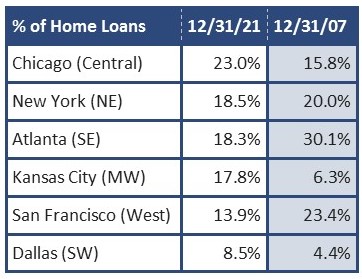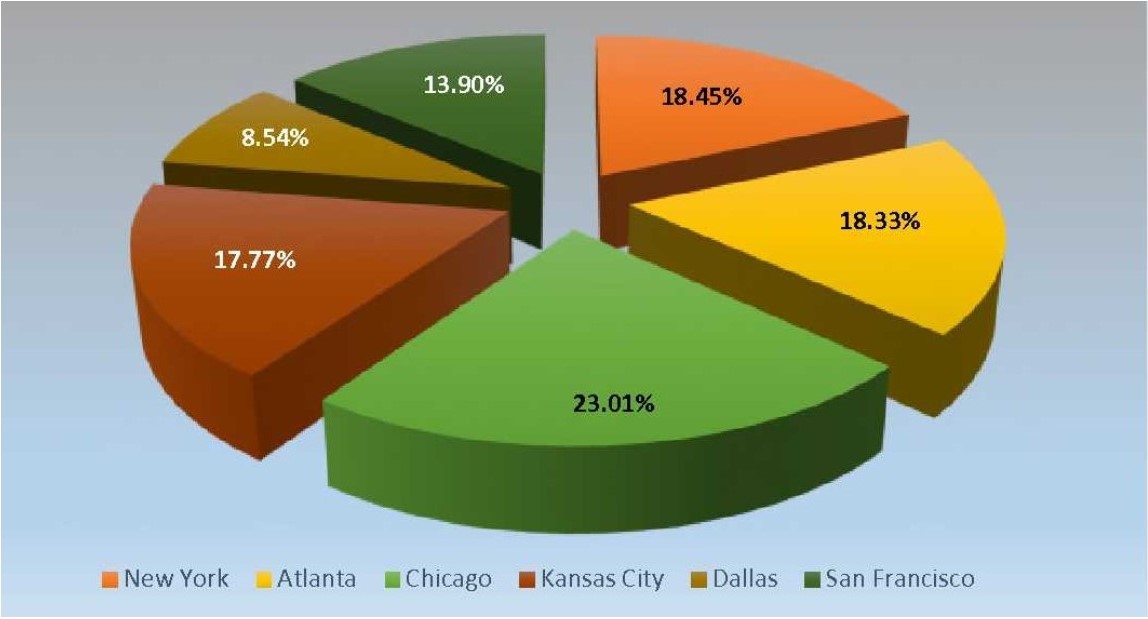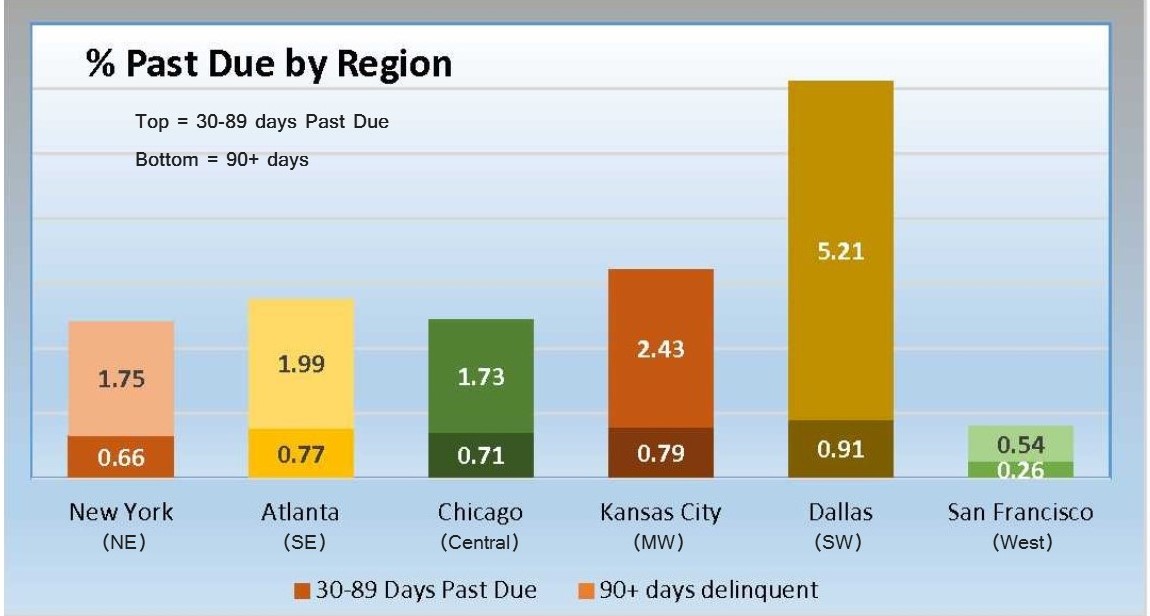
We saw an interesting article in the American Banker recently (March 25, 2022) about the “red-hot housing market” looking like 2007. There are definite similarities, no doubt. And for those of us who were around in the 1980s, it’s déjà vu all over again... again.
In each instance, a housing bubble was created, each had its own unique cause, but a bubble was created nonetheless. And history has taught us that a bubble cannot make a soft landing. It will burst. The best we can do is be on the lookout and be prepared for such an event.
That being said, single family residential mortgages at U.S. banks grew 2.2% during 2021. Distribution looked like this:
Now let's compare that to year-end 2007:

Back then, the Atlanta Region had over 30% of the total. Ground zero for the 2008 meltdown, Cape Coral, Florida, was in this region. In two states alone, Florida and Georgia, over 150 banks failed between 2007 and 2013.
The San Francisco Region had the second highest percent (23.4%) in 2007 and if you recall, both Countrywide and Washington Mutual (WaMu) were headquartered in this region. They failed in 2008 and 2009, respectively.
With the Savings and Loan crisis of the 1980s, trouble started when the oil bubble burst in Texas. This bubble both grew and burst in Texas, but the contagion spread far and wide. Housing prices dropped across the country and homeowners found themselves upside down on their mortgages. Over 1,000 banks and savings and loans failed as result.
We do NOT expect a repeat. Bank regulations are much stricter now and the banking industry is stronger than it was during either of those episodes. But we are always on the lookout for weaknesses.
One area that never strays far from our minds is delinquencies, especially if the bank’s loan portfolio is not well-diversified. The 50 banks listed on page 7 each have at least half (50%) of their total loans invested in residential real estate. They also reported that at least 2.25% of those residential real estate loans are 90 days (or more) delinquent. (That’s higher than the national average of 2.04%.)
We eliminated banks that have a loan to deposit ratio (LTD) less than 30%. That eliminated special purpose banks, those that barely make any loans at all. Some of the banks we included do have relatively low LTDs, but all are greater than 30%.
5-Star Century S&LA, Trinidad, CO, the first bank on the list, for example, has an LTD of just 38%. Of its $29.4 million in loans, $18.5 million are in residential real estate. Its delinquency rate on those mortgage loans is high at 2.4%, but it does not rely too heavily on mortgage loans anymore. It was originally established in 1903 for that reason, but offers much more than just home loans today. In fact, its securities portfolio is currently worth double that of its loan portfolio. Its overall delinquency rate is just 0.44%.
Colorado is included in the Dallas Region, as are Arkansas, Louisiana, Mississippi, New Mexico, Oklahoma, Tennessee and, of course, Texas. This region has, by far, the highest rate of past due home loans (see chart).
Twenty-two of the banks on page 7 hale from this region. Only one, 4-Star Seattle Bank, WA resides in the San Francisco Region, which currently reports the lowest rate of past due home loans. Seattle Bank’s total delinquency to asset ratio of 3.1% is far less concerning than it appears because, when you remove the government guaranteed loans, that ratio goes down to 1.2%.




1 comment on “Bubble, Bubble, Toil and Trouble”
Comments are closed.